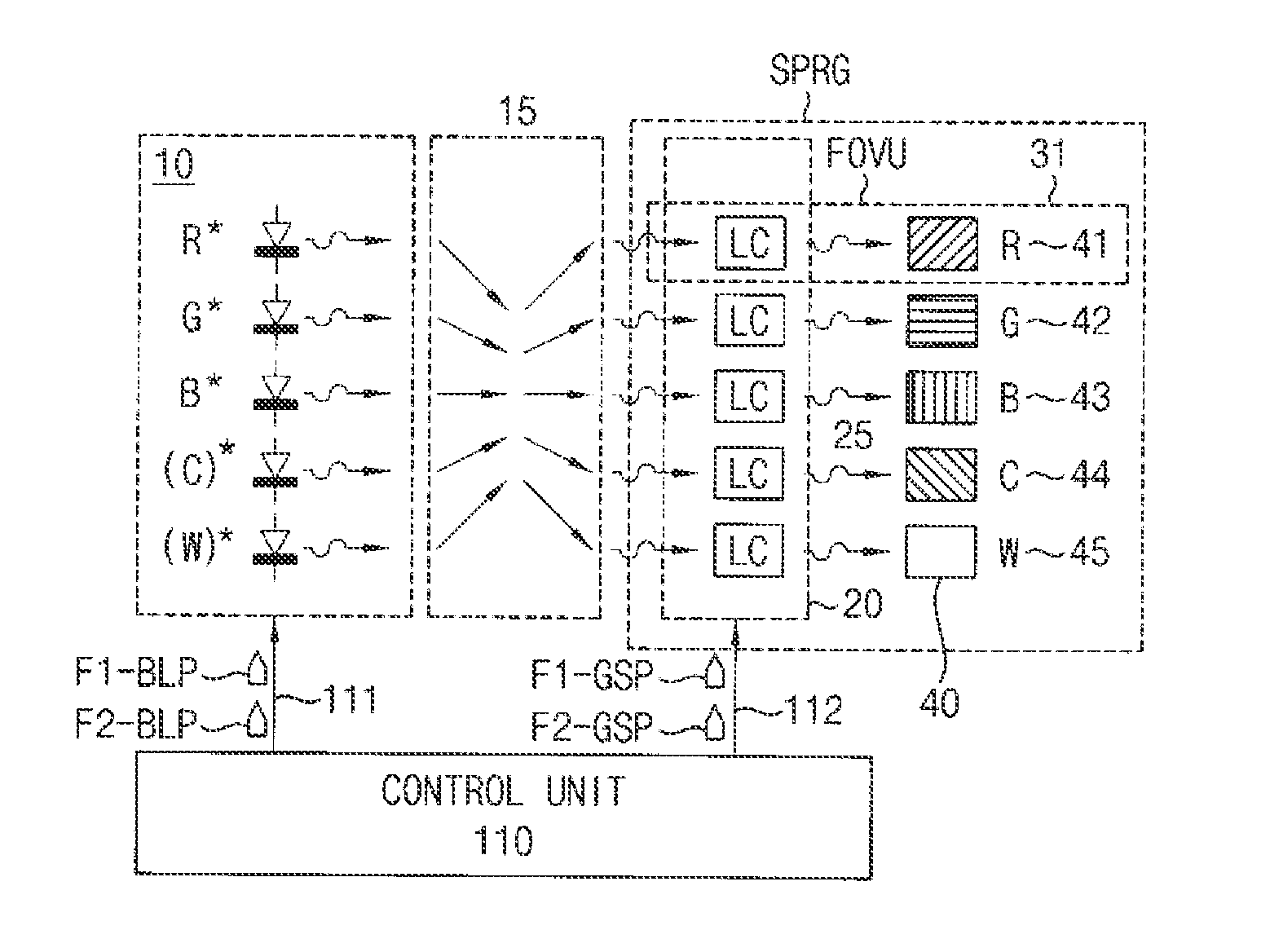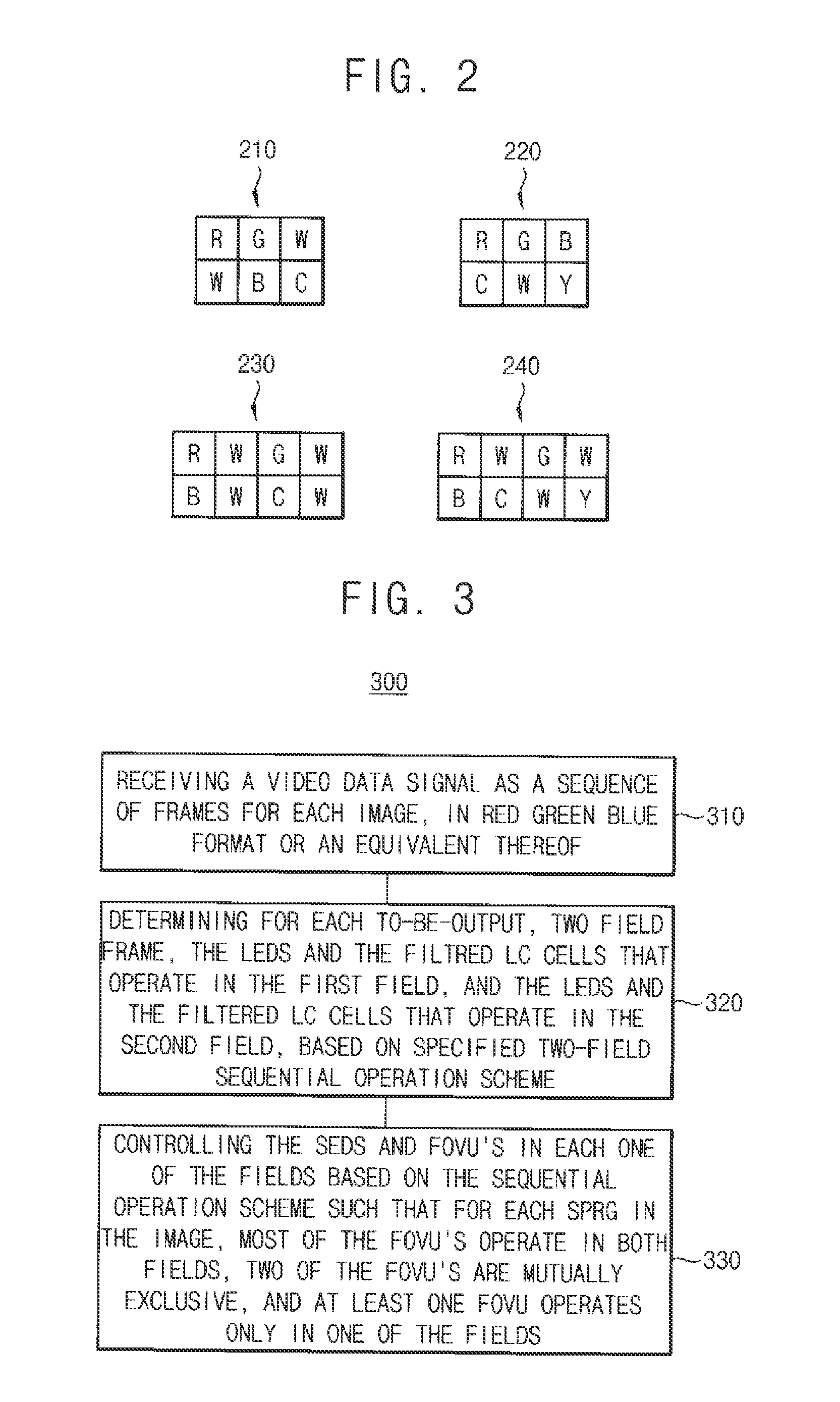Multi primary color display device and method of driving the same
a multi-color display and display device technology, applied in the field of lcds, can solve the problems of increasing the switching rate, introducing flicker and other undesired artifacts, and disadvantageously increasing power consumption
- Summary
- Abstract
- Description
- Claims
- Application Information
AI Technical Summary
Benefits of technology
Problems solved by technology
Method used
Image
Examples
Embodiment Construction
[0018]FIG. 1A is a high level schematic block diagram illustrating a display device 100 configured in accordance with the present teachings. The exemplary display device 100 includes: a subpixel rendering unit (SPR) 108 that is configured to receive a three-primary colors (e.g., RGB) encoded image representing signal 105 and to produce one or more re-mapped, image representing signals for driving a more-multi-colored display panel whose subpixels include more than just the three-primary colors and whose subpixels are laid out in a geometric pattern other than the one expected by the input image representing signal 105.
[0019]The display device 100 may include a multi-colored backlighting panel as well as the multi-colored, subpixels containing front panel. The display area (DA) of the multi-colored, front panel is tessellated by a plurality of so-called, subpixel repeat groups (SPRG's) each having a repeated same pattern of multi-colored (and optionally white) subpixels. GrayScale co...
PUM
 Login to View More
Login to View More Abstract
Description
Claims
Application Information
 Login to View More
Login to View More - R&D
- Intellectual Property
- Life Sciences
- Materials
- Tech Scout
- Unparalleled Data Quality
- Higher Quality Content
- 60% Fewer Hallucinations
Browse by: Latest US Patents, China's latest patents, Technical Efficacy Thesaurus, Application Domain, Technology Topic, Popular Technical Reports.
© 2025 PatSnap. All rights reserved.Legal|Privacy policy|Modern Slavery Act Transparency Statement|Sitemap|About US| Contact US: help@patsnap.com



